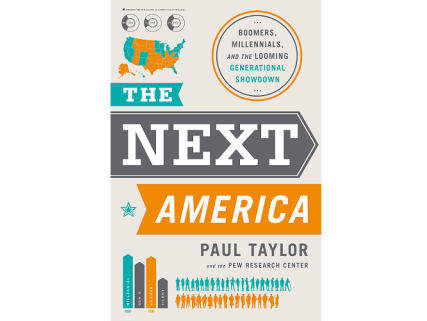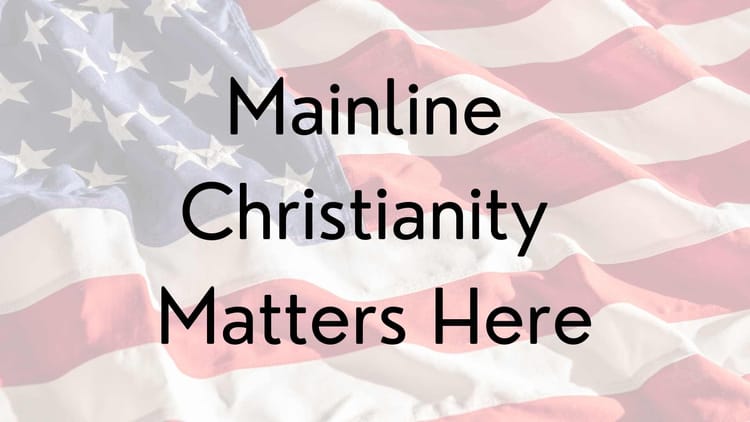Next America 10: Engaging Digital Natives

If you discovered this blog through the e-Formation posts, welcome! Even though this post is in the Next America series, it’s about e-formation. Read on, and I’d love your comments.
This post is part of an ongoing series summarizing and reflecting on The Next America: Boomers, Millennials, and the Looming Generational Showdown

from the perspective of an Episcopal priest.For a schedule of upcoming posts, click here. For the complete series, click here.
Section Summary
Chapter 10 of The Next America: Boomers, Millennials, and the Looming Generational Showdown

is lighter on statistics and heavier on anecdotes than the rest of the book. That’s surprising, since there are plenty of statistics from the Pew Research Center on how the internet has changed life in America. However, the chapter is told largely through the eyes of “Natalie,” a “digital native” whose story illustrates the way the internet has been woven into the lives of Millennials. (A consideration of how the internet has impacted the lives of older generations is conspicuously absent.)
Here’s the summary:
How has technology shaped the Millennial generation?
- The Kaiser Family Foundation found in 2009 that children and youth ages 8-18 were exposed to 10 hours and 45 minutes of media of all kinds during a typical day and spent 29% of their time multitasking with several kinds of information in front of them.
- The Millennials’ relationship with digital technology is different from older generations; its ubiquity is all they have ever known.
- The Internet has reshaped their social lives; it reaches everyone constantly, amplifying the challenges of adolescence.
- The Internet has reshaped their academic lives; “research” now means “type keywords into Google.”
- Teachers generally believe that the Internet conditions students to expect to find information quickly and easily.
How do young people experience digital technology?
- By mid-2009, texting was the primary means for teens to communicate with friends outside of school hours.
- By 2013, teenagers were reporting Facebook fatigue and expressing waning enthusiasm for the platform.
- Millennials find jobs, start careers, pick roommates, and make other major life decisions as a result of information and communication delivered via the internet, particularly social media.
- Millennials tend to assume “if news is important, it will find its way to me,” trusting their social networks to deliver necessary information rather than seeking it from traditional news sources.
- More than 2/3 of American adults and more than 80% of Millennials create content which is published on the Internet – everything from status updates on Facebook to blogs to product reviews.
How has the internet reshaped society? How will it in the future?
- Sociologist Barry Wellman says that our society is now dominated by “networked individualism” rather than the previous tight-knit smaller groups and large hierarchical bureaucracies of the past.
- “Networked individualism” places the individual at the center of society, making a single person responsible to develop the connections that will enable them to function in and contribute to the wider world. This is both more socially liberating and more socially taxing than previous social structures.
- Each individual has a personally tailored internet experience; they visit particular websites and maintain unique systems of contacts. This amplifies a sense of individual identity and responsibility.
- Because the internet is ubiquitous and Millennials are usually connected, they have grown up in a world where old boundaries no longer apply. Work and home, public and private, home and school are no longer separated.
- “today’s teens and young will be nimble, quick-acting multitaskers who treat the Internet as their external brain” (p. 142)
- Projections for the future indicate that the already thin line between self and technology will effectively vanish as the “Internet of Things” develops, offering new ways to integrate technology into our lives.
Churchwork Reflections
I remember the first time I saw a personal computer. It was 1988; I was a senior in high school. I had absolutely no idea at the time how much that little plastic box (an early Apple) would change the world.
I also recall the first time I recognized the disruptive power the Internet posed for Christian formation. That happened less than 10 years ago at a youth group gathering as students were sharing about what they had done earlier that week. A middle schooler said, “While we were snowboarding, I grabbed a video and posted it to YouTube. It already has 40 likes.”
I remember I needed an explanation of YouTube – it was very early days for the video-sharing site, which launched in 2005. And I also remember thinking that this single statement was a sign that the old “normal” wasn’t normal anymore. When a teenager carries a video camera everywhere and has a worldwide publishing platform constantly available, that student experiences the world in a fundamentally different way than I did when I was a teenager.
Other people are way ahead of me (and the rest of the church) on this. The core principles of learning appropriate for digital natives have been made clear by the Connected Learning Alliance. Check out their infographic answering the question “What is connected learning?”

If that’s too blurry, check out their tweet from this week with a cleaner version:
The 6 learning & design principles behind the #connectedlearning vision: http://t.co/Z8GpaPp3g0 pic.twitter.com/lfPwenEw78
— #ConnectedLearning (@TheCLAlliance) June 26, 2014
Either version of the infographic points the way to a new kind of religious education which is resourced by the internet without being overpowered by it: a way of imagining learning the stories of God’s people and how to discern God’s presence in the world which is fully participatory and also highly practical.
But the church, at least the Episcopal Church, hasn’t yet developed resources that enable this type of connected learning. Instead, we tend use the internet as a one-way content delivery platform. The most innovative resources (Vibrant Faith at Home) integrate social sharing along with content delivery, but that’s still not quite to the level of the connected learning paradigm.
Just yesterday, I was talking with my kids about how the Internet developed – telling them about the sounds of dial-up access, AOL’s “You’ve got mail!” greeting, and how, before Google, we used to go to the library and look up research topics on card catalogs. I asked, “Can you imagine a world without the internet?” The consensus response was “No, not at all.”
My kids, and all the children and youth of our church, are digital natives. I am increasingly aware that my practices of teaching and parenting have to catch up to their reality. I have nothing in my repertoire that assumes teenagers are “multitaskers who treat the Internet as their external brain” and yet I know this to be true. My sense of urgency about creating alternative methods for faith formation has only grown as I’ve read this chapter of The Next America.





Member discussion